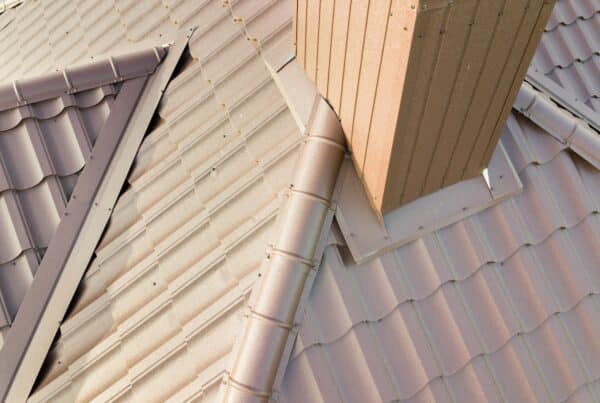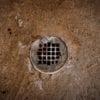
Like any other homeowner, your home is likely your sanctuary of comfort and safety. The roof above you is a critical shield, protecting you and your loved ones from the harshness of the elements. But what lies beneath the shingles and tiles is a component just as vital—roof sheathing.
If this is a new term to you, it refers to a layer of board that acts as the backbone of your roof. In the following sections, we’ll unpack the purpose and types of roof sheathing, the necessity of expert installation, and the critical interplay with insulation. We will also guide you through maintenance best practices, arming you with the knowledge to protect your home effectively, at every step of your homeownership journey.
The Basics and Purpose of Roof Sheathing
Roof sheathing, also known as decking, is board or sheet material fastened to the roof rafters or trusses. It serves as the base upon which all other roofing materials, such as underlayment, shingles, or tiles, are applied. But its role extends far beyond just being a surface for nail attachment.
First and foremost, sheathing acts as a structural element, providing rigidity and strength to the roofing system. It ties together the rafters, distributing the weight of the roof evenly and keeping the surface flat and stable. This structural integrity is essential for the roof’s longevity and for the safety of those within the home.
In addition to structural support, sheathing plays a critical role in the weatherproofing of your home. It is a key player in preventing water infiltration which can cause rot, mold, and other moisture-related damage. Quality sheathing also supports the roof’s drainage system. It does this by enabling proper water runoff, which is vital in preventing leaks and water damage.
Furthermore, roof sheathing is instrumental in providing insulation and energy efficiency. It acts as a barrier, reducing heat transfer and helping maintain a consistent temperature within the house. This means that whether it’s summer or winter, your energy bills can be kept in check. Lastly, in areas prone to extreme weather, sheathing contributes to the roof’s ability to withstand these forces.

Types of Roof Sheathing
Selecting the right type of roof sheathing is vital for ensuring that your home is well-protected and energy-efficient. The market offers several materials, each with its unique benefits and considerations. Here, we will explore the most commonly used sheathing materials, guiding you to make the best choice for your home.
Oriented Strand Board (OSB)
Oriented Strand Board is a popular choice due to its cost-effectiveness and durability. Composed of interwoven wood strands bonded with adhesive, OSB panels are strong and provide consistent quality. They are engineered to withstand moisture and resist warping, making them suitable for various climates.
Plywood
Plywood is another widely used sheathing material. It is made by gluing together layers of wood veneers with the grain of each layer perpendicular to the others, which increases its strength. Plywood is lighter than OSB and tends to dry faster if exposed to moisture, which can be a significant advantage in rainy regions.
Structural Insulated Panels (SIPs)
For those looking to maximize energy efficiency, Structural Insulated Panels are an innovative option. SIPs consist of an insulating foam core sandwiched between two structural facings, typically oriented strand board. This type of sheathing provides excellent thermal performance and can significantly reduce energy costs over time.
Fiberboard
Fiberboard comes from wood fibers or plant fibers bonded with resin. This material is known for its insulating properties and is generally more affordable than plywood or OSB. It’s also lightweight and easy to cut and fit, which can simplify the installation process.
Radiant Barriers
In hot climates, radiant barriers are an ideal option for roof sheathing. They are typically reflective material, such as aluminum foil, applied over a substrate. This sheathing type reflects radiant heat, helping to keep attics cool and reducing cooling loads.
Gypsum Board
Gypsum board sheathing is a fire-resistant option that certain areas often require due to fire codes. It’s made from gypsum, a mineral that contains water molecules, which release steam in the event of a fire, helping to protect the structure.
When considering the type of sheathing for your roof, factors such as climate, local building codes, the overall design of your roof, and budget will all play a role in your decision. It’s essential to weigh the benefits of each material against these considerations and choose the sheathing that will provide the best performance and protection for your specific situation.
Importance of Proper Installation and Insulation
Naturally, the precision of installation and the integration of insulation are pivotal to the efficacy of roof sheathing. Proper installation secures the sheathing firmly to the roof structure, ensuring it can bear the weight and provide a dependable foundation, and accounts for weather-induced expansion and contraction. Installers must adhere to manufacturer guidelines, leaving adequate space between panels for this purpose and arranging seams to maximize strength.
Equally important, is the insulation’s partnership with the sheathing. Together, they form an energy-efficient barrier that regulates indoor temperatures and reduces heating and cooling costs. Insulation must be free of gaps or compression, and with a proper vapor barrier to prevent moisture ingress that can lead to mold and structural damage.
The synergy between well-installed sheathing and insulation yields a roof that withstands the elements and enhances the home’s energy performance. Future sections on maintenance and professional assistance will delve deeper into preserving this critical roofing synergy.

Recommended Maintenance for Roof Sheathing
To prolong the life of your roof sheathing and ensure that it continues to protect your home effectively, regular maintenance is essential. This involves periodic inspections, particularly after severe weather events, to check for signs of damage, such as warping, rot, or mold growth.
Keeping the attic well-ventilated is also crucial to prevent moisture buildup that can compromise the integrity of the sheathing. Trim overhanging tree branches to reduce the risk of physical damage and to limit the accumulation of leaf debris on the roof, which can retain moisture. Ensure that gutters, rake, and downspouts are clean and functioning properly to prevent water from backing up onto the roof.
Lastly, it’s important to check the insulation periodically to ensure it remains dry and well-positioned, as this directly affects the performance of the sheathing.
When to Call a Professional
While regular inspections can be DIY, certain situations necessitate a professional. If you discover extensive damage, such as large areas of rot or mold, it’s crucial to have a professional assess the situation and perform the necessary repairs.
Experts should also enter if the sheathing sags or if there are noticeable changes in the roofline, as these can indicate structural issues. If there are leaks inside your home but the source isn’t apparent, a roofing professional can perform a detailed inspection to pinpoint the cause and recommend solutions.
Additionally, if you’re considering replacing your roof or making significant changes, professional guidance is vital. In any case, where safety is a concern, such as working at heights or dealing with potentially hazardous materials, it’s always best to contact a professional.
Conclusion
Wrapping up, think of your roof sheathing as the silent spotter of your roof, quietly upholding comfort and safety from above.
It’s the steadfast layer that, while out of sight, should never be out of mind. Vigilant upkeep paired with timely professional insight is the key to its longevity. Treat it well, and it will stand as an unwavering sentinel against the whims of weather and time. For a look at your roof sheathing or an in-depth home inspection, reach out to the experts at Avalon Home Inspections today!






